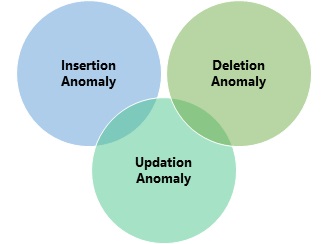Home »
DBMS
Redundancy in DBMS
DBMS | Redundancy: In this tutorial, we will learn what is redundancy in DBMS, how it occurs and the problems caused by it, how to avoid redundancy, and its advantages and disadvantages.
By Pratishtha Saxena Last updated : May 31, 2023
What is Redundancy in DBMS?
Data Redundancy in a database management system (DBMS) refers to the duplication or repetition of data within a database. It occurs when the same piece of data is stored in multiple locations or multiple tables within the database. This redundancy can happen unintentionally or intentionally.
Unintentional Data Redundancy may occur due to poor database design or inadequate normalization. It can result from storing the same data in different tables without proper linking. Unintentional redundancy can lead to data inconsistencies and anomalies, as updates or modifications to one instance of the data may not be reflected in other instances.
Intentional Data Redundancy, on the other hand, is a deliberate design decision aimed at improving system performance and data availability. It involves storing redundant copies of data to facilitate faster data retrieval, and reduce the need for complex calculations. Intentional redundancy can be useful in scenarios where performance is critical, and the overhead of maintaining consistency across replicas is manageable.
How does Redundancy Occur?
Redundancy in a database can occur due to various factors and scenarios. Here are some common causes of data redundancy:
- When a database is not properly normalized, redundant data can occur. If a database is not adequately normalized, the same data may be stored in multiple tables or fields, resulting in redundancy.
- Data replication and mirroring involve creating redundant copies of data for improved availability and fault tolerance. These techniques duplicate data across multiple servers or locations, ensuring that if one copy becomes unavailable, another copy can be accessed.
Problems Caused by Redundancy in DBMS

- Insertion Anomaly: An insertion anomaly occurs when it is not possible to insert certain data into a database without also including unrelated data. In other words, the database schema or design requires the presence of additional, unrelated information for a new record to be inserted.
- Deletion Anomaly: A deletion anomaly occurs when the deletion of certain data from a database results in the unintended loss of unrelated information. Deleting a record or set of records unintentionally removes data that should have been preserved, leading to data loss and potential inconsistencies.
- Updation Anomaly: An updation anomaly occurs when there is data inconsistency due to incomplete or partial updates in a database. In other words, updating a piece of data in one place without updating the corresponding related data leads to inconsistencies.
How to Avoid Redundancy?
- Normalize your database by organizing data into logical tables and reducing data duplication. Normalize the database schema to eliminate redundant data by adhering to normalization rules like First Normal Form (1NF), Second Normal Form (2NF), and so on. This helps ensure that each piece of data is stored only once and prevents data redundancy.
- Utilize primary keys and foreign keys to establish relationships between tables.
- Utilize views and virtual tables to create logical representations of data.
- Conduct regular data quality checks and identify instances of duplicate data. Remove or merge duplicate data to maintain a clean and consistent database.
Advantages of Redundancy
- Improved Data Availability
- Enhanced Fault Tolerance
- Increased Performance
- Load Balancing
Disadvantages of Redundancy
- Increased Storage Costs
- Data Inconsistency
- Complexity in Data Management
- Increased Network Bandwidth Usage